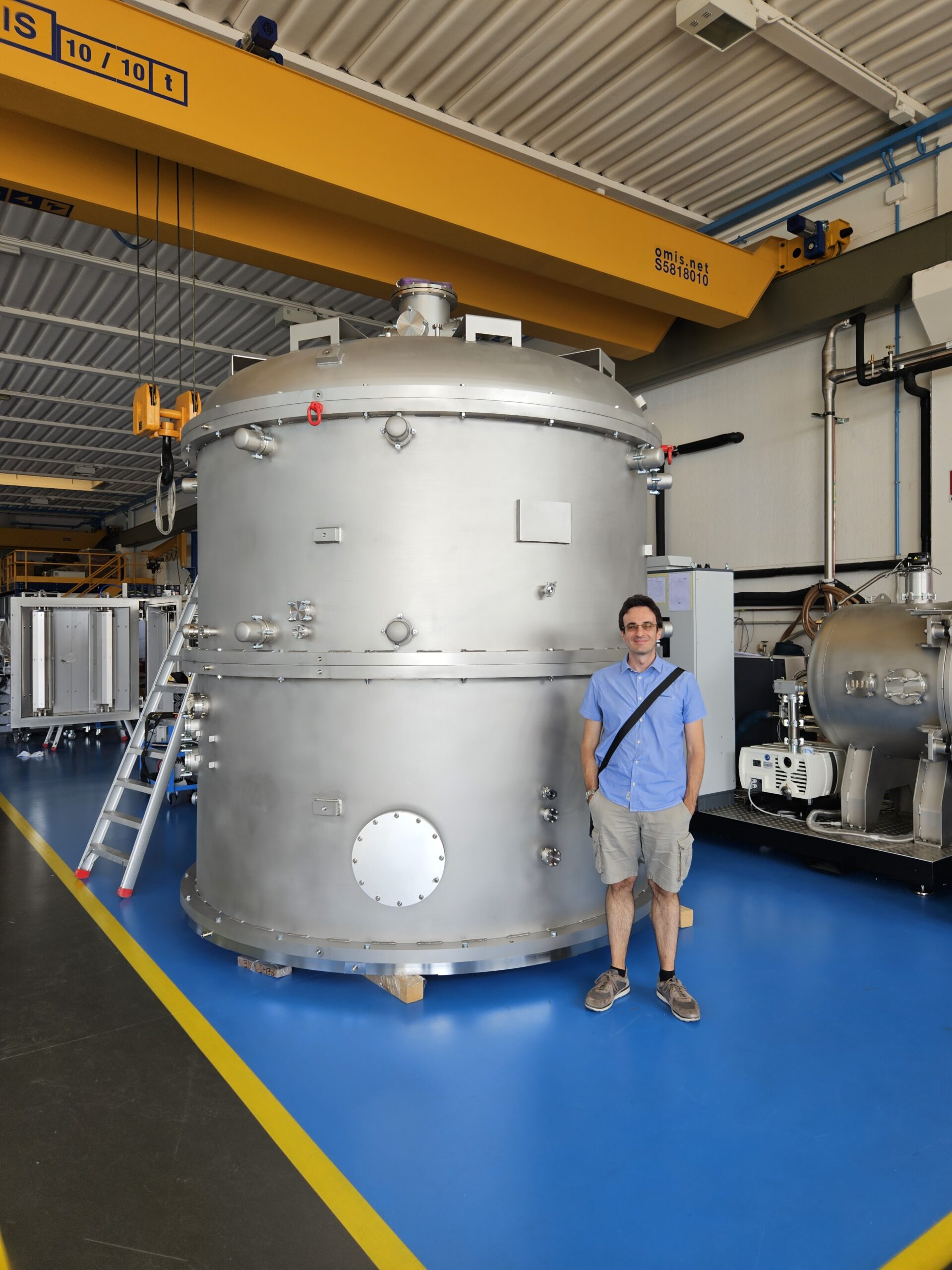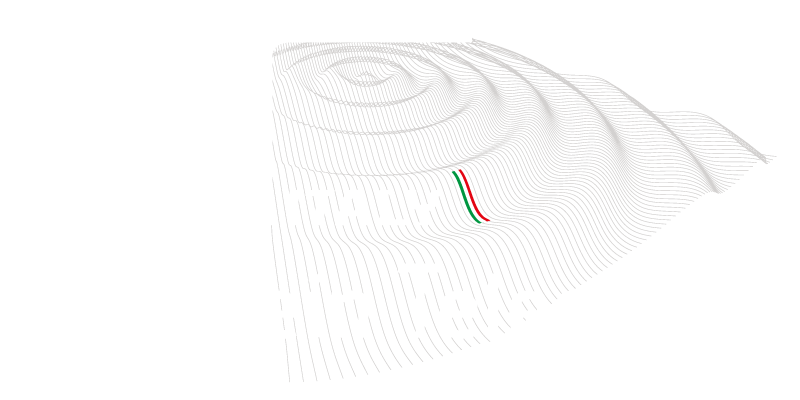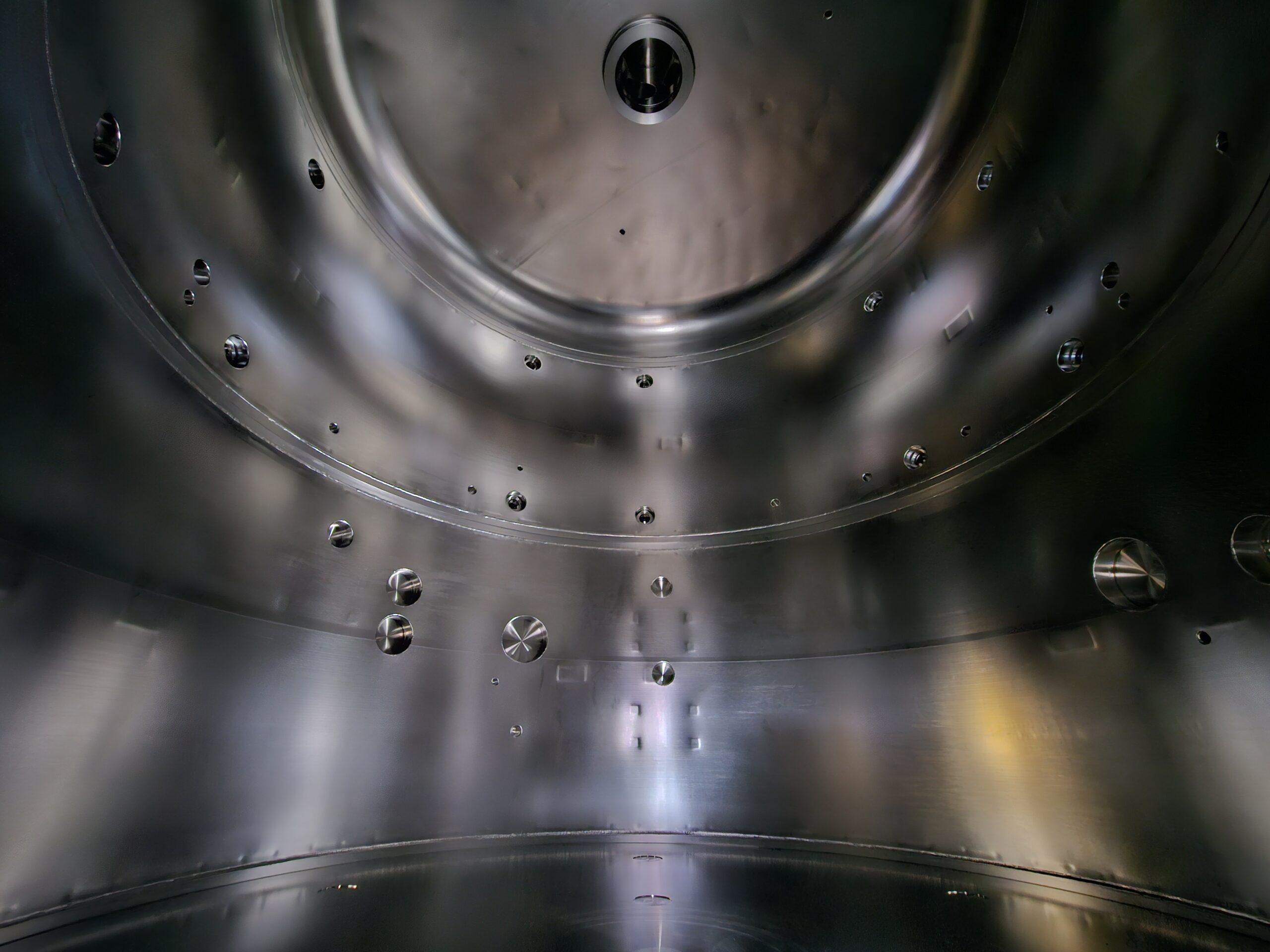In recent weeks, the construction of a large vacuum chamber for the C75 cryostat has been completed at Alca Technology’s facility in Schio (Vicenza). The cryostat will be used to cool and test a full-scale payload prototype for the Einstein Telescope (ET).
The vacuum chamber successfully passed all leak tests. By the end of the year, after the remaining parts of the cryostat are assembled, it will be moved and installed at the ARC-ETCRYO laboratory of the INFN Rome section, located at Sapienza University of Rome. The construction of the cryostat and the laboratory activities are part of the ETIC project, funded by the Italian Ministry of University and Research (MUR) under the National Recovery and Resilience Plan (NRRP), with INFN as the lead institution. ETIC is aimed at supporting Italy’s candidacy to host ET in Sardinia, near the former Sos Enattos mine in the Nuoro area.
The future gravitational wave observatory will require cutting-edge cryogenic technologies, essential to cool the detector’s mirrors down to extremely low temperatures. The goal is to increase the sensitivity of the experiment, particularly at low frequencies, which represent an energy range of great interest for astrophysical and cosmological observations. The C75 cryostat, which will reach temperatures as low as 10 kelvin (equivalent to -263 degrees Celsius), will be dedicated to the development of a low mechanical dissipation suspension system to enable the cooling of the Einstein Telescope mirrors. The dimensions of the system will be very similar to those planned for ET.

Luca Naticchioni (INFN Rome researcher) next to the new vacuum chamber.

